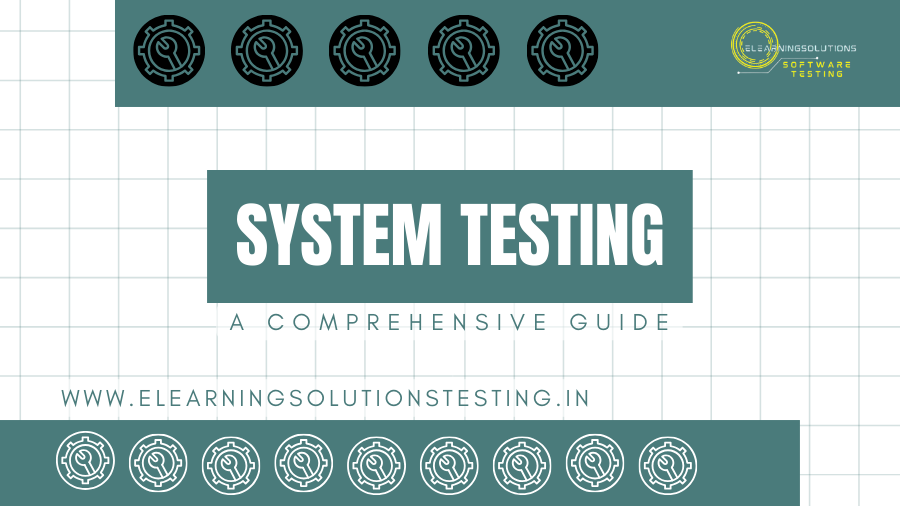Introduction to System Testing
System testing is the backbone of software development, ensuring that the final product meets its intended purpose and performs flawlessly in various scenarios. In this article, we’ll explore the diverse landscape of system testing and its pivotal role in delivering high-quality software.
Types of System Testing
When it comes to system testing, one size does not fit all. There are several types of system testing, each serving a unique purpose in the software development lifecycle. From unit testing to regression testing, each type plays a crucial role in ensuring the reliability and functionality of the software.
Unit Testing: The Foundation
Unit testing is where the journey begins. It focuses on testing individual components or units of code in isolation. By verifying that each unit functions as expected, developers lay a solid foundation for the entire system.
Integration Testing: Ensuring Harmony
As components come together, integration testing steps in to verify that they work seamlessly as a unified system. This type of testing identifies issues that may arise when different modules interact, ensuring a harmonious collaboration.
Functional Testing: User Experience Matters
Functional testing dives into the user experience, validating that the software’s functionalities meet the specified requirements. It’s all about ensuring that the software does what it’s supposed to do in real-world scenarios.
Non-functional Testing: Beyond Functionality
Non-functional testing goes beyond mere functionality. It delves into aspects like performance, security, and usability. By addressing these non-functional requirements, testing ensures a comprehensive evaluation of the software.
Regression Testing: Safeguarding Against Bugs
As the software evolves, new features are added, and changes are made. Regression testing ensures that these modifications don’t introduce new bugs or negatively impact existing functionalities. It’s a continuous process that safeguards against unintended consequences.
The Interplay of Different System Testing Types
To create a robust testing strategy, it’s crucial to understand how different types of testing interact. This section explores how to ensure comprehensive test coverage by strategically incorporating various testing approaches.
Choosing the Right System Testing Approach
Not all projects are created equal, and neither should their testing strategies be. This section guides readers on tailoring testing approaches to align with project requirements and different development lifecycles.
Automation in System Testing
Automation is a game-changer in testing. It offers efficiency, repeatability, and faster feedback. Here, we explore the advantages of test automation and considerations for selecting suitable automation tools.
Challenges
Managing complex systems and balancing test coverage within resource constraints are common challenges in testing. This section provides insights into addressing these challenges effectively.
Benefits of Rigorous Testing
Rigorous testing pays off in the long run. By ensuring software reliability and minimizing post-release issues, organizations can deliver a product that meets or exceeds user expectations.
Real-world Examples of System Testing
Success stories and lessons learned from real-world testing implementations provide valuable insights into the practical application of testing principles.
Future Trends in System Testing
The world dynamic, and this section explores emerging trends such as the integration of AI and machine learning, indicating the continuous evolution of testing practices.
Conclusion
In conclusion, system testing is not just a checkbox in the software development process; it’s the heartbeat that ensures the software’s health and functionality. Emphasizing the importance of thorough testing is crucial for delivering high-quality software that stands the test of time.
FAQs
- Is system testing only relevant for large-scale software projects?
- No, It is relevant for projects of all sizes. Its significance increases with the complexity of the software.
- How often should regression testing be performed during development?
- Regression testing should be performed continuously throughout the development process, especially after significant code changes.
- Can it uncover security vulnerabilities?
- Yes, non-functional testing, including security testing, is a critical part of system testing and helps uncover security vulnerabilities.
- Is test automation suitable for all types of projects?
- Test automation is beneficial for most projects but should be implemented judiciously based on project requirements and goals.
- What role does it play in Agile development?
- It is integrated into Agile development as a continuous process, ensuring that software meets evolving requirements and maintains quality standards.
You may be interested in:
50 Important Manual Testing Interview Questions
Transporting Organization structure from one system to another

